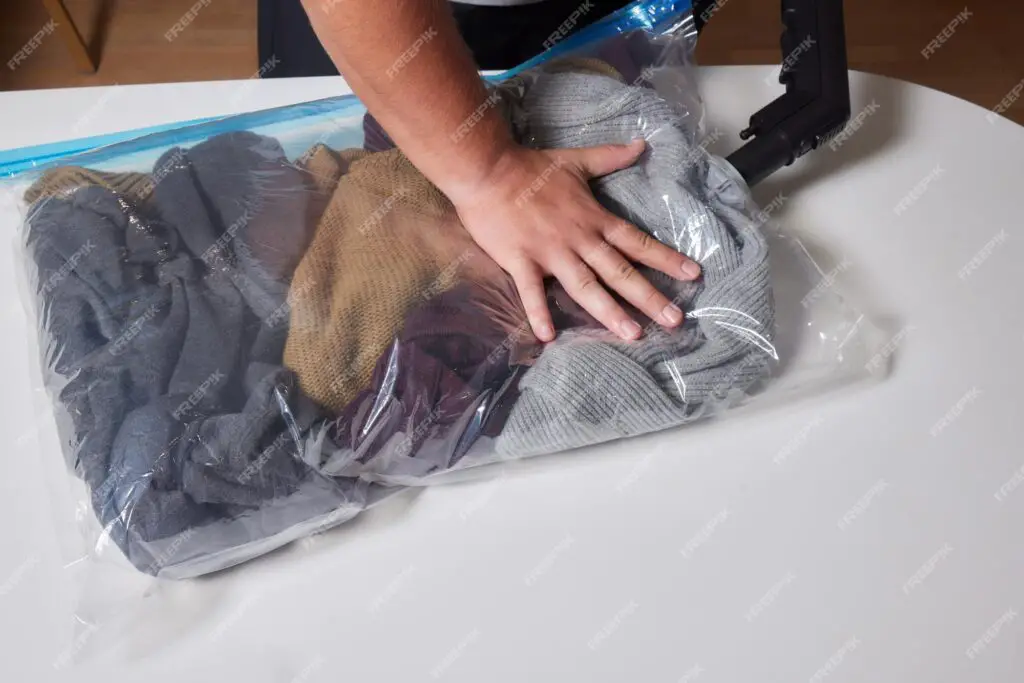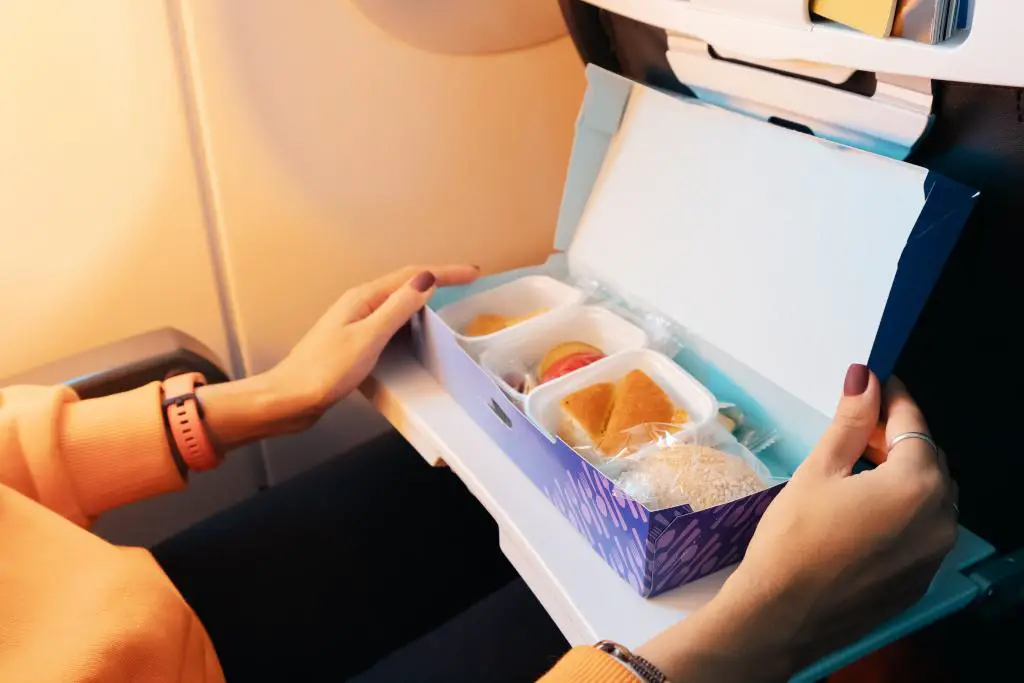When embarking on international travel, mastering the art of packing is crucial, and one aspect that demands careful consideration is the preservation and transportation of food items.
“How to pack food items for international travel” becomes a pivotal question for those seeking to savor familiar tastes or adhere to dietary preferences while abroad.
Navigating through the complexities of customs regulations, varying climates, and potential spoilage requires a strategic approach.
In this guide, we will explore effective techniques and essential tips to ensure your culinary essentials withstand the journey, allowing you to indulge in the comfort of home even when miles away.
1. Research and Planning

Destination-specific regulations
Before embarking on any international culinary adventure, thorough research into destination-specific regulations is paramount.
Each country has its own set of rules governing the importation of food items, and compliance is key to avoiding potential hassles at customs.
Be sure to delve into the official guidelines provided by the destination country’s customs and agriculture departments.
Some nations have stringent restrictions on certain food products due to concerns related to agriculture, health, or safety.
By familiarizing yourself with these regulations in advance, you can streamline the packing process and ensure a smooth entry through customs checkpoints.
Dietary considerations
Understanding and accommodating your dietary needs is a crucial aspect of international travel. Research the availability of specific dietary options at your destination and plan accordingly.
If you have dietary restrictions or preferences, such as allergies, vegetarianism, or specific cultural dietary practices, ensure that you pack enough suitable food items to sustain you throughout your trip.
Additionally, consider language barriers and have translations for common dietary terms to effectively communicate your requirements when seeking local cuisine.
Availability of local foods
While packing your favorite snacks and staples is essential, exploring the local culinary scene can be a rewarding part of international travel.
Research the availability of local foods at your destination to strike a balance between familiar comforts and embracing new flavors.
Take note of local markets, grocery stores, and dining options that align with your dietary preferences.
This proactive approach allows you to supplement your packed items with fresh, locally sourced foods, enhancing your overall travel experience and providing an authentic taste of the destination.
2. Choose Appropriate Containers
Durable and airtight containers
Selecting the right containers for packing food items during international travel is crucial to ensure the preservation of freshness and prevent spillage.
Opt for containers that are not only durable but also airtight. Sturdy containers protect your food from physical damage, while airtight seals help maintain the quality and taste by preventing exposure to air and humidity.
Look for containers made from materials like plastic, glass, or stainless steel that can withstand the rigors of travel and provide an effective barrier against external elements.
Leak-proof options
When preparing for international journeys, it’s essential to prioritize leak-proof containers to avoid any messy and inconvenient spills in your luggage.
Liquid items, sauces, or even foods with high moisture content should be packed in containers specifically designed to prevent leaks.
This not only preserves the integrity of your packed items but also ensures that your clothing and other belongings remain clean and undamaged throughout the trip.
Seek out containers with reliable seals and secure locking mechanisms to minimize the risk of leaks during transit.
Size considerations
Efficient packing is an art, and selecting containers of appropriate sizes is a key element of this process. Consider the duration of your trip and the intended consumption frequency when determining the size of containers.
Compact sizes are ideal for shorter journeys, while larger containers may be necessary for extended stays. Additionally, choose containers that can easily fit into your luggage without wasting valuable space.
Prioritize versatility by opting for containers that can nest or stack, allowing you to make the most of the available packing space and ensuring that your food items are efficiently organized for the duration of your international travel.
3. Wrap and Seal

Use of plastic wrap and foil
Effectively wrapping and sealing your food items is a crucial step in preserving their freshness and preventing contamination during international travel. Consider using plastic wrap and aluminum foil to provide an extra layer of protection.
Wrap individual items or containers securely with plastic wrap to create a barrier against air and moisture. Aluminum foil, on the other hand, offers insulation and protection from external factors.
This combination helps maintain the quality of perishable goods and adds an extra level of security to prevent leaks or spills in your luggage.
Double-bagging for liquids
When it comes to transporting liquids, especially sauces, dressings, or other condiments, double-bagging is a practical solution to minimize the risk of leaks.
Place liquid containers in sealed plastic bags, and then insert them into another bag for an added layer of protection.
This precaution not only prevents spills but also helps contain any potential mess, ensuring that your other packed items remain unaffected.
Additionally, consider using travel-sized containers for liquids to comply with airline regulations and minimize the amount of space they occupy in your luggage.
Vacuum sealing options
For the ultimate in food preservation during international travel, explore vacuum sealing options. Vacuum sealing removes air from the packaging, significantly extending the shelf life of perishable items.
This method is particularly beneficial for preserving the freshness of meats, cheeses, and other sensitive foods.
Invest in a portable vacuum sealer and bags suitable for your specific travel needs. Vacuum-sealed packages not only reduce the risk of spoilage but also help optimize the use of space in your luggage, allowing you to pack efficiently for a more organized and secure journey.
4. Insulate and Cushion
Use of insulation materials
Preserving the temperature of your packed food items is essential for maintaining their quality during international travel.
Employing insulation materials is a key strategy to safeguard perishables from temperature fluctuations. Utilize insulated bags or coolers with built-in thermal linings to create a protective barrier against external heat.
Additionally, consider incorporating thermal bubble wrap or insulated pouches to further insulate temperature-sensitive items.
This extra layer of insulation helps prevent food items from spoiling or losing their intended texture due to exposure to varying climates during transit.
Padding fragile items
When packing delicate or fragile food items, it’s crucial to provide adequate padding to prevent breakage or damage.
Use materials such as bubble wrap, foam padding, or even crumpled newspaper to cushion fragile items within your luggage.
Nestle these items securely within the container, ensuring that they are surrounded by a protective layer that absorbs shocks and vibrations during travel.
This precaution not only preserves the integrity of delicate foods but also minimizes the risk of spillage or cross-contamination.
Preventing shifting during travel
To maintain the organization and integrity of your packed food items, take measures to prevent shifting during transit.
Arrange items strategically within your luggage, placing heavier and sturdier items at the bottom to provide a stable foundation.
Utilize dividers or packing cubes to compartmentalize different types of food items, reducing the chances of movement and potential damage.
For an extra layer of security, consider using packing materials such as packing peanuts or air-filled packaging to fill any gaps and immobilize items within the luggage, ensuring they arrive at your destination intact and ready for consumption.
5. Labeling
Clearly label contents
Maintaining an organized and easily accessible inventory of your packed food items is essential for a smooth travel experience.
Clearly label each container or package with the contents, specifying both the type of food and any relevant details.
This step not only facilitates efficient unpacking upon arrival but also helps you quickly identify specific items without rummaging through your luggage.
Use waterproof markers or labels to ensure legibility, and consider color-coding or using symbols for added clarity, especially if you have a variety of food items packed.
Include expiration dates
Incorporating expiration dates on your labeled containers is a crucial aspect of responsible food packing for international travel.
This practice not only assists you in managing the freshness of your provisions but also aids in complying with destination-specific regulations.
Clearly mark the expiration dates of perishable items, allowing you to prioritize their consumption based on freshness.
This information is also valuable in the event that you need to explain or declare the contents to customs officials, promoting transparency and adherence to food safety guidelines.
Attach contact information
While rare, the possibility of luggage mishandling or items getting lost during travel exists. To mitigate these risks, attach contact information to your luggage or directly onto your food containers.
Include your name, phone number, and email address, making it easy for airline or transportation personnel to reach you if needed.
This additional step can prove invaluable in reuniting you with your belongings, including the carefully packed food items.
It also serves as a proactive measure to address any unforeseen circumstances and ensure a smoother resolution in case of an incident.
6. Check Transportation Regulations

Airlines’ food transport policies
Before packing your culinary delights for international travel, it’s imperative to familiarize yourself with the specific food transport policies of the airlines you’ll be using.
Different carriers may have varying rules regarding the types and quantities of food items allowed in carry-on or checked luggage.
Some airlines may restrict liquids or certain perishables, while others may have specific guidelines for packing and declaring food.
Check the airline’s official website or contact their customer service to obtain accurate information, ensuring that you comply with their regulations to avoid any last-minute surprises at the airport.
Customs and import restrictions
Navigating through customs checkpoints requires a thorough understanding of the destination country’s customs and import regulations.
Research and comply with these restrictions to prevent any potential delays or confiscation of your packed food items.
Some countries have stringent rules regarding the importation of specific food products due to concerns related to agriculture, health, or safety.
Be aware of any quarantine or documentation requirements and, if necessary, declare your food items appropriately.
Staying informed about these regulations ensures a smoother transition through customs and helps you enjoy your culinary provisions without any interruptions.
TSA guidelines
The Transportation Security Administration (TSA) in the United States, and its equivalents in other countries, have specific guidelines regarding the screening of food items at security checkpoints.
Familiarize yourself with these guidelines to ensure that your packed food items comply with security regulations.
Pay attention to restrictions on liquids, gels, and aerosols, especially if your culinary delights include sauces, dressings, or other liquid-based items.
Consider placing liquids in travel-sized containers within a clear, resealable plastic bag to facilitate the security screening process.
By adhering to TSA guidelines, you can streamline the security checkpoint experience and avoid any potential issues with your carefully packed food items.
7. Documentation
Carry necessary permits
When packing food items for international travel, particularly if you are bringing specialty or regulated products, ensure that you possess any necessary permits or documentation required by the destination country.
Some nations have specific regulations governing the importation of certain food items, and obtaining the requisite permits demonstrates your compliance with local authorities.
Check with the relevant government agencies or embassies to secure any required permits in advance.
Having the necessary documentation not only facilitates a smooth entry through customs but also ensures that you can enjoy your packed treats without any legal complications during your travels.
Maintain a detailed list
Creating and maintaining a comprehensive list of the food items you are carrying is a prudent practice for organized and accountable packing.
Include specific details such as the type of food, quantity, and any relevant expiration dates. This list serves as a handy reference, allowing you to cross-check your inventory during travel and providing clarity if customs officials request information about your packed items.
Having a detailed list ensures transparency and can expedite the inspection process, demonstrating your commitment to complying with travel and importation regulations.
Keep receipts and proof of purchase
In addition to a detailed list, retaining receipts and proof of purchase for the food items you are carrying is essential for documentation purposes.
These documents serve as evidence of the legitimacy of your packed items, showcasing that they were legally acquired.
In the event of any queries from customs officials, having receipts on hand provides tangible proof of your compliance with import regulations.
It is advisable to keep these documents in an easily accessible and organized folder within your travel documents, ensuring a hassle-free experience at customs and demonstrating your commitment to adhering to all relevant travel regulations.
Related Topics:
Conclusion
Mastering the art of packing food items for international travel involves a thoughtful blend of preparation, compliance, and organization.
Navigating destination-specific regulations, considering dietary needs, and anticipating the availability of local foods are integral components of a successful culinary journey.
Choosing appropriate containers, sealing items securely, insulating and cushioning delicacies, and meticulous labeling all contribute to the preservation and convenience of your packed provisions.
Checking transportation regulations and ensuring compliance with TSA guidelines add a layer of security to your travel plans.
Lastly, meticulous documentation, including permits, detailed lists, and proof of purchase, not only facilitates a smooth passage through customs but also demonstrates a commitment to responsible and transparent travel.
Armed with these insights, travelers can embark on their international adventures with confidence, savoring the flavors of home while embracing the diverse culinary landscapes awaiting them abroad.
FAQs
Can I pack any type of food when traveling internationally?
While many food items are allowed, it’s essential to check destination-specific regulations. Some countries have restrictions on specific items due to agricultural, health, or safety concerns.
Can I bring homemade or perishable foods on an international flight?
It depends on the destination and the nature of the food. Homemade and perishable items are subject to scrutiny, and it’s crucial to comply with airline and customs regulations. Consider factors like shelf life and temperature sensitivity.
How do I prevent food items from spoiling during long-haul flights?Use insulated containers, ice packs, or consider vacuum sealing to maintain temperature. Choose durable, airtight containers for perishables and pack them strategically to minimize exposure to varying climates.

I loved as much as youll receive carried out right here The sketch is tasteful your authored material stylish nonetheless you command get bought an nervousness over that you wish be delivering the following unwell unquestionably come more formerly again since exactly the same nearly a lot often inside case you shield this hike
I have been browsing online more than three hours today yet I never found any interesting article like yours It is pretty worth enough for me In my view if all website owners and bloggers made good content as you did the internet will be a lot more useful than ever before
Normally I do not read article on blogs however I would like to say that this writeup very forced me to try and do so Your writing style has been amazed me Thanks quite great post
Nice blog here Also your site loads up fast What host are you using Can I get your affiliate link to your host I wish my web site loaded up as quickly as yours lol